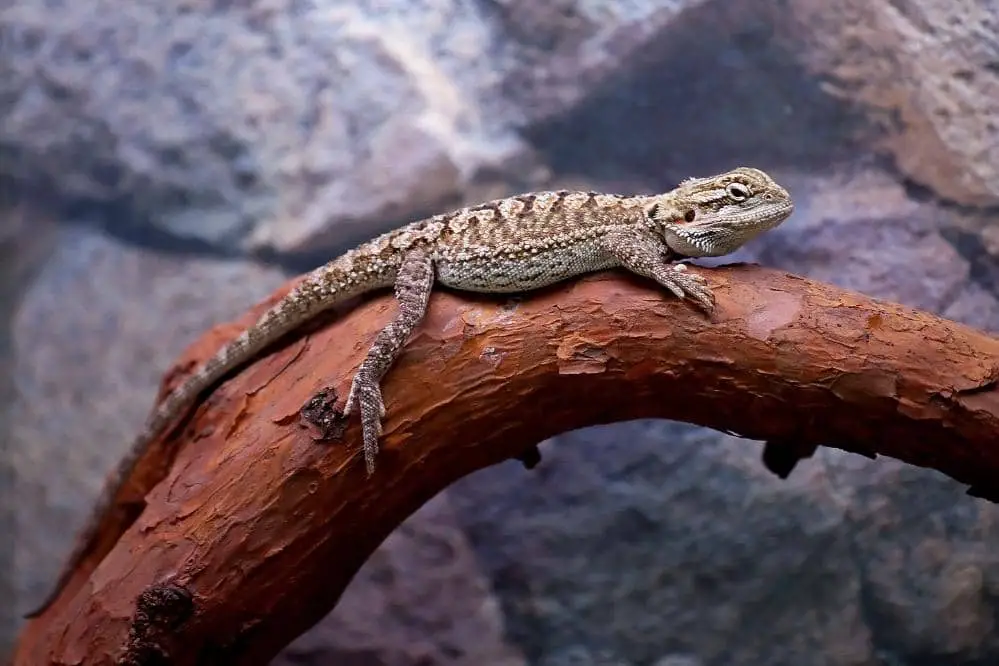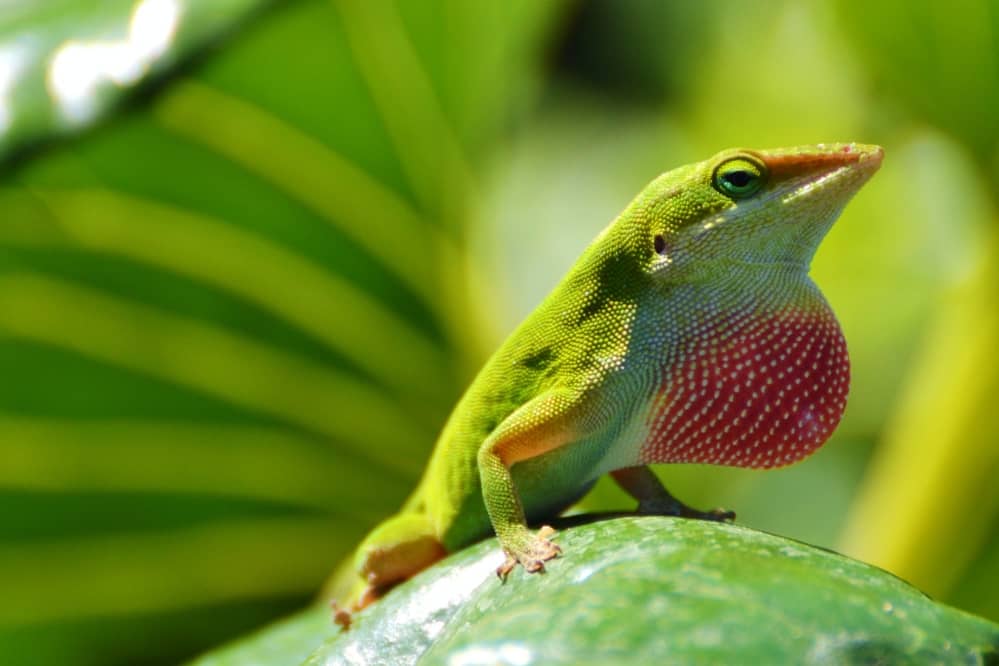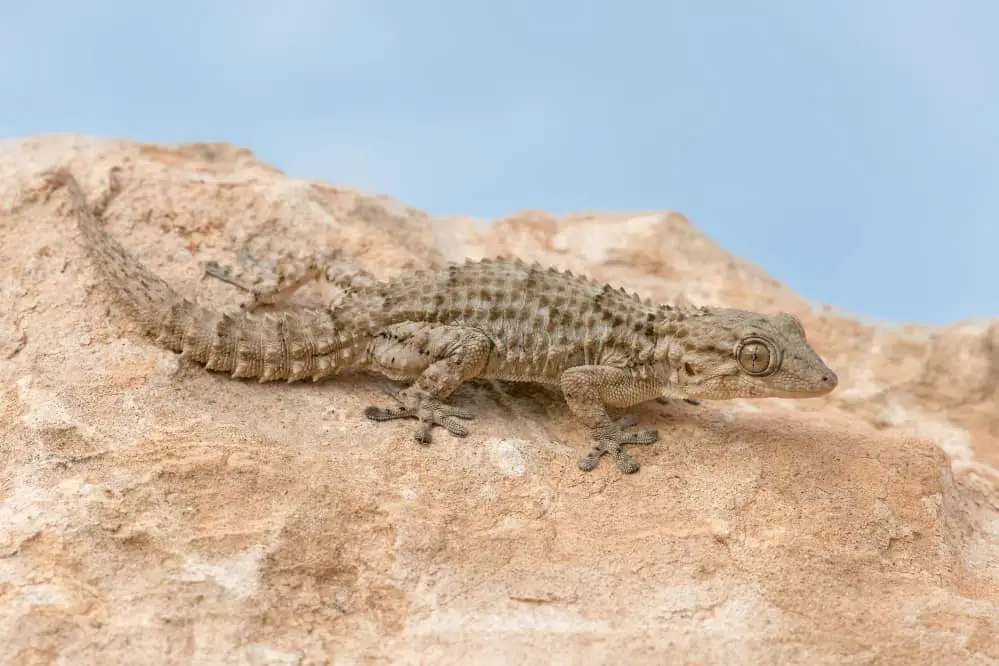Do you like pet lizards, especially ones that change colors, as much as we do? But have you ever wondered why and how different species of lizards alter their body color?
Bearded Dragons, Green Anoles, Geckos, Iguanas, and Chameleons are among the five lizard species that can change color. These lizards typically change color in response to environmental changes and hormonal changes in their bodies. Temperature, emotions, and light intensity can all cause these lizards’ colors to change
5 Lizard That Changes Its Color
This article is for reptile fanatics who wish to learn more about lizards that change color. We’ve put together a full guide on 5 lizards that change color, including why and how they do it, so keep reading.
1. Bearded Dragons
Bearded dragons are one of the world’s most popular types of pet lizards. Bearded dragons are native to Australia. Bearded dragons are not like chameleons in the sense that they can alter the color of their entire body.
Bearded dragons, unlike chameleons, do not change their color to camouflage themselves, and bearded dragons can only change colors to a few shades of yellow and orange.Bearded dragons can only change the color of their body’s dorsal (back) side. Their backs gradually change from dark grey to bright yellow or reddish orange. The color shift occurs over a period of seconds to minutes.

Bearded dragons can change their color due to pigment movement inside dermal chromatophore cells. The dispersion or aggregation of melanin pigment within melanophores, in particular (melanin-containing chromatophores).
The bearded dragon’s endocrine system, nervous system, or a combination of both systems may be responsible for the color change. Environmental factors such as temperature and circadian rhythm also triggers color changes in bearded dragons.
“By turning to a darker color in cooler temperatures, the bearded dragons reflected substantially less light than the paler colored lizards, at 8% and 23% reflectivity, respectively,” says Professor John Endler of Deakin University.
Bearded dragons that reflect less light heat up faster and reach their active body state 22 minutes early, allowing them to escape predators and saving them basking time during the breeding season.
Related articles.
2. Green Anoles
Green Anoles are native to the southern United States and are popular as pet lizards. Because of their ability to change color, these lizards are sometimes falsely referred to as chameleons. Green Anoles have the ability to alter their body color from green to brown and vice versa. Extensive research has been conducted to determine how the color of Anoles changes and what things influence it.

Some studies claimed that Green Anoles change color in reaction to their surroundings. When these lizards enter vegetation, they turn green, and when they walk over rocks, they turn brown, however, this theory was later disproved because this was not always the case.
According to researchers, Green Anole color change is mostly triggered by social interactions. Anoles shift from green to brown mostly during aggressive encounters, notably between males near the boundaries of each other’s territory.
Hormones are responsible for color changes in Green Anoles.These color changes are caused by a hormone called intermedin, which is released by the pituitary gland.
Predation attempts, temperature, and light intensity are all factors that affect Anole color change. Anoles remain green when temperatures are above 70 degrees Fahrenheit, but turn brown when temps fall below that level.
3. Geckos
There are approximately 2000 species of geckos, and all of them are not able to change their color. The Moorish gecko has the ability to actively change the color of its dorsal side.

Scientists believe they do this in reaction to environmental changes such as temperature, light, and background.Geckos, unlike chameleons, do not change color to express emotions. Geckos change their body color not only to blend in with their surroundings and avoid predators but also to hunt down their meal.
4. Chameleons
It is true to state that in the lizard world, chameleons are masters of disguise. Unlike other lizards, they can change the color of their individual body cells. There has been a lot of research done around the world to figure out how chameleons can alter their body color so effectively.

Chameleons are able to change their body color from green to cream, yellow, and dark brown, with dark and light spots of red and blue. Chameleons can change their color due to the presence of chromatophores, which are specialized cells. Chromatophores can contain yellow or black pigments, as well as transparent crystals that reflect light and generate various shades of blue and white. Chameleons have numerous layers of these cells. These stretch pigments migrate and alter the color.
According to new research, chameleons can change their body color by changing the lattice of nanocrystals in their skin’s superficial cells. These superficial skin cells are referred to as iridophores, and the nanocrystals found within them are made of guanine, one of the nucleic acid bases of DNA. In these cells, nanocrystals are normally arranged in an ordered pattern that reflects green light. When a chameleon stretches these cells, the crystal arrangement changes, and they reflect the light of different wavelengths, such as yellow.
Chameleons change color in response to their surroundings in order to blend in. Chameleons also change color to ward off rival males in their area and in response to emotions such as fear and delight.
5. Iguanas
Iguanas are not very good at changing their body color, although their skin tone can change in specific settings.Iguanas, unlike Chameleons, cannot change their body color to blend in with their surroundings.

Iguanas change their body tone from green to dark brown to black if they are stressed.The color shift begins from their body and head and progresses down their tail, legs, and belly.
The color change frequently occurs in less dominant iguanas who are intimidated and kept away from good basking sites and food by dominant iguanas. If you leave such a pet iguana in the house with a dominant iguana, it may starve to death.

